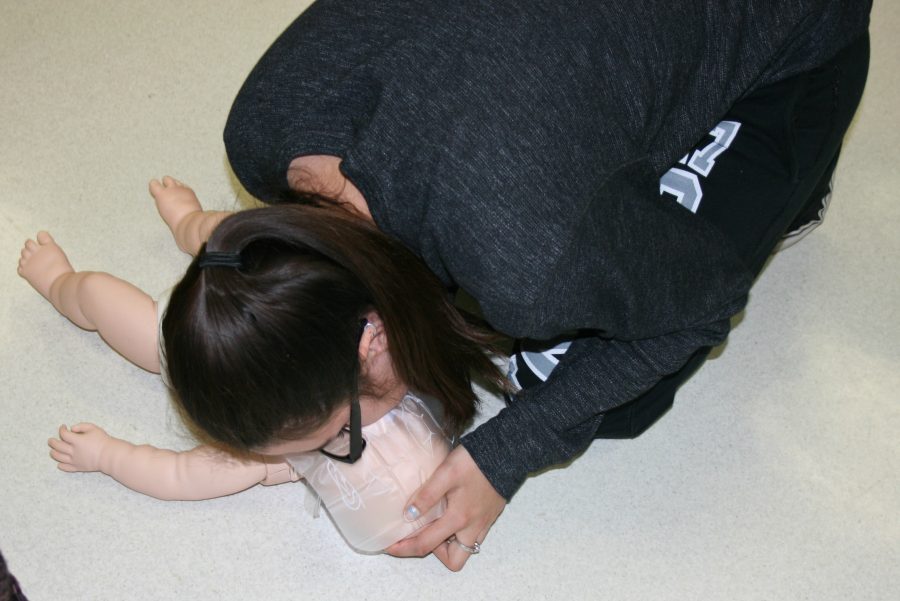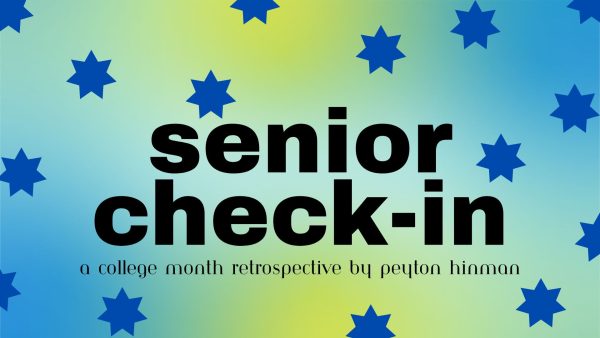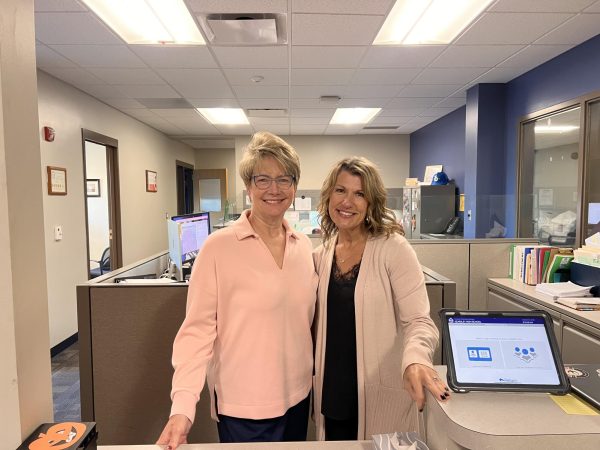Students become certified in CPR
IMAGE / Kate Monreal
Senior Victoria Bond practices giving breaths for an infant during CPR training on Thursday, April 20.
Junior Kaitlyn Nellett feels confident with what she learned in school Thursday, April 20.
However, the training she received was not part of a typical school day — Nellett was certified in CPR.
“My career choice is an EMT so it is a need,” Nellett said. “I feel confident on how to do CPR and my certification is coming in the mail sometime next week, and I’m a step closer to my goal.”
Nellett and many other students took the CPR training class from the American Red Cross.
In this course, students learned how to preform CPR on all age groups, preform basic first aid, administer an EpiPen and how to use an AED, which is an automatic defibrillator that restarts the heart on patients who have just had sudden cardiac arrest.
Ms. Nicole Cameron, a registered nurse who holds a bachelor’s in nursing, conducted the training. Cameron thinks that CPR is important and every student should learn it.
“The more students that know about CPR the better,” Cameron said.
She also said that knowing CPR is important because “time is an essence when you’re in a (emergency) situation.”
During the training, students watched a demonstration, had an overall discussion on what they watched, and then they practiced what they were taught.
Mrs. Kandy Cousins, human anatomy teacher, doesn’t think that CPR is all that difficult.
“The only thing that would be challenging in administering CPR is memorization,” Cousins said.
The students who took the class are CPR certified. Certification lasts for two years before needing to be re-certified.
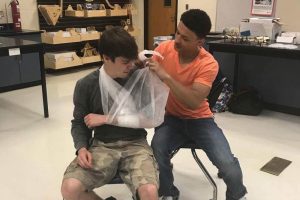
Seniors Lyric McMasters (right) and Trevor Swickard practice setting up a sling.
One purpose for the training is for students who think they may go into health and medicine to get certified so they can enroll in health programs in college.
Students can receive this training through the American Red Cross or the American Heart Association.
Some students who took the course feel like the best thing they got out of their training is the knowledge and the independence it takes to conduct CPR.
Senior Cami Clarambeau feels like she has some independence from the training.
“If I’m in a situation where someone needs help, I can help them with no questions asked,” Clarambeau said. “I no longer have to be helpless, and I can make a difference in the outcome.”
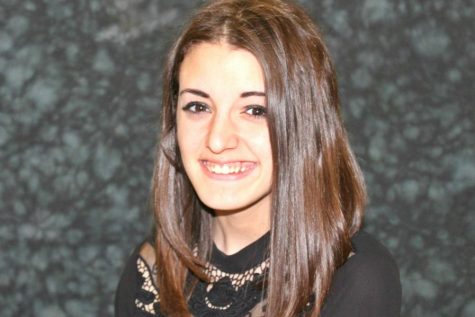
Birthday: December 28, 1999
Extracurricular activities: Work
Hobbies: Laughing, coloring, and being imperfect.
Plans after high school: Go...

